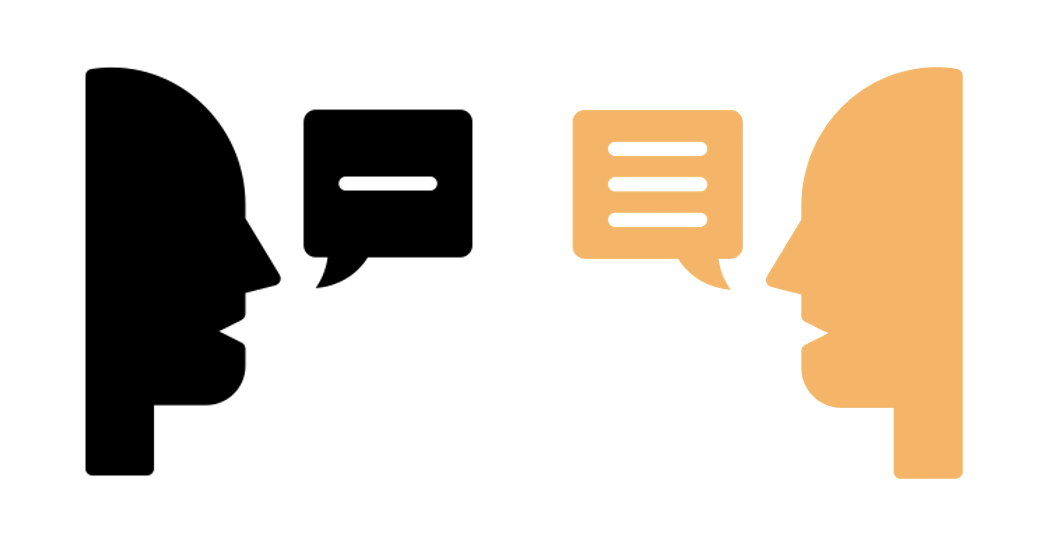|
(About a 12-minute read and a few minutes for the Practice session.)
I’ve been working on editing activity descriptions for an organization's database. Each activity includes some “possible reflection questions.” Anyone familiar with asking educationally-minded questions would see both closed-ended and open-ended questions in the mix.
Over the years, my perspective on these two forms of questioning has been molded into the belief that one is not better than the other (contrary to some of the training philosophies I’ve been exposed to throughout my career). It comes down to purpose. When you plan for using a questioning method and it works, it serves, well, the purpose. If unsuccessful, you consider (reflect upon) how you could use the method better or what could serve you better next time and try that. As Maya Angelou tells us, “Do the best you can until you know better. Then, when you know better, do better.” Working through the database of activities I’ve been adjusting some of the reflection questions to (in my experience and opinion) open up more/deeper conversations. I started saving some examples of the changes I was making to share my thinking with other educationally-minded questioners like you. Before we get to the examples, I want to share some information about closed-ended and open-ended questioning. Personally, I want to reemphasize, that one form is not better than the other. These two methods are tools. And, like literal tools, each has specialized (intended) applications. I flat head screwdriver turns, in or out, flat-slotted screws. A hammer is intended to hammer in or take out nails. Yes, both can be used to do other things but were initially designed for a particular purpose. Just like questioning. For some additional perspective, I asked ChatGPT (another tool with an intended purpose): What would you tell someone who wanted to know the value of both closed-ended questioning and open-ended questioning? Here are a few replies that support our exploration (use my prompt to see all the responses):
Both closed-ended and open-ended questioning have their own merits and are valuable in different contexts.
Closed-Ended Questioning
Open-Ended Questioning
Balancing the Two
Here are some question examples I saved under a few categories – each explained below. The final ‘Practice’ category is for you to reshape the questions in order to open up some deeper conversations (on purpose).
Closed-ended adjusted to Open-ended Question These are examples of adjustments I made to closed-ended questions – I would use the open-ended questions to get the same information with more conversation. C: Did anything surprise you about this activity? O: What surprised you during the activity? C: Was it difficult to remember the names of the opposing team? O: What makes it difficult to remember people’s names? C: Does this activity remind you of anything in your everyday life? O: What things in your everyday life does this activity remind you of? C: Did everyone make it to their final destination? O: What did it take from everyone to make it to your destination safely? C: What was your reaction when we switched to a new tangle of rope? O: When you found out you had to untangle someone else’s knot, what came to mind for you? C: How would it feel to constantly be cleaning up someone else’s mess? O: What are some of the choices we can make when we find someone else’s mess? Which one of these choices is common for you? Which one of these choices would be your preference? C: Did you ever help a person in need of a ship? [A place to stand safely.] O: Think about this first before answering – did you see someone in need? What did you do about it? Where do you believe you picked up this trait? Why do you use this trait? C: Think about how the group communicated during the activity. Do you see any connections to communication trends on your team? O: Think about how your team communicated during the activity. What connections do you see to the communication that takes place in your everyday lives? C: How important was empathy in this activity? O: What is your understanding of empathy? How does empathy fit into an activity like this? (What did it look like, or sound like during the activity? What are some other ways we could have been more empathetic? What does empathy look like in some of your other teams?) C: What behaviours did you notice going on during the activity? O: Describe some of the things people were doing during the activity that made you uncomfortable. What were people doing to make you feel comfortable? C: How important was trust in this activity? Who did you have to trust? O: In what ways did you have to trust your partner? What did you do to maintain the trust with your partner? What did you do to diminish trust with your partner? What commitment can you make with the whole group to build trust? C: How did it feel to be holding a lower-value card? O: When you had a pretty good idea about the value of your card, what conversation were you having in your head? [Self-talk objective.] C: How did you get into your groups? O: What did it take from everyone to get into your smaller groups?
Closed & Why?
It’s common to follow up closed-ended questions with an open “Why?” Here are some adjustments to using an open question right off the bat. C: Is it easy or hard to talk about how you’re feeling? Why? O: What are the things that make it easy for us to talk about our emotions? What are the things that make it challenging for us to talk about our emotions? C: Did your thinking change throughout the activity? Why? O: How did your thinking have to change in order to achieve the goal? C: Were you worried about slowing the group down when the hoop came to you? Why or why not? O: What concerns did you have during the activity? Where do you believe these concerns come from? C: Did your process change at all? Why? O: What changes took place during your transition from one side of the tarp to the other? In your opinion, why did these changes occur? C: Are there things you would change about the way you treat other people? Why? O: From this point on, what would you like to change about the way you treat others? C: Did anything change in how you communicated? Why? O: In what ways did your communication change during the activity? What caused these changes?
Closed with Follow-up to Open
Use closed-ended questions to “gather data” and then follow up with an open question to dive deeper. C to O: What were some feelings you experienced during this activity? How did any of these feelings influence your participation in the challenge? C to O: Did you feel uncomfortable at any time during the activity? What did you do about it? What are some other ways we can respond when we’re feeling uncomfortable? C to O: Raise your hand if this was your first experience with a Lycra Tube. When we’re trying something for the first time, what do we want to keep in mind? C to O: How were you being treated during the mingle? What did you do about it? What would you like to do about it in the future? C to O: What were some feelings you experienced during this activity? How did any of these feelings influence your participation in the challenge?
Open to Closed
How about flipping the script? Start with an open-ended question, then finish with a closed to emphasize a final position. C: Was your group successful? O to C: How did you all define ‘success’ for this activity? Based on this definition, were you successful? C: Were everyone’s ideas heard? O to C: Describe the process you had for sharing ideas. Were everyone’s ideas heard? How do you know? O: How did the group agree to try an idea? O to C: Describe how the group agreed to try an idea. Is this the way you want to continue making decisions? How would you like to make decisions in the future? C: Did anyone feel left out? O: What feelings did you experience during the different rounds? Were the feelings the same for each round or did they change? What influenced the change?
Practice Questions
How would you adjust each closed-ended question below to dive a little deeper?
There are many ways to form and use questions in educational settings. Have a purpose. Reflect on the efficacy. Keep doing what works for you, change it up if needed. When we know better, we can do better. Keep doing the good work out there. We need you! Chris Cavert, Ed.D.
0 Comments
Your comment will be posted after it is approved.
Leave a Reply. |
OnTeamBuilding is a forum for like-minded people to share ideas and experiences related to team building. FREE Team Building
Activity Resources OTB FacilitatorDr. Chris Cavert is an educator, author and trainer. His passion is helping team builders learn and grow. Archives
January 2024
|



 RSS Feed
RSS Feed